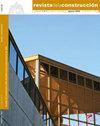现有单层工业钢筋混凝土预制设施抗震性能的方法学研究
IF 1.4
4区 工程技术
引用次数: 1
摘要
在地震多发地区,存在着多种结构缺陷的老旧工业设施。对这些建筑的抗震性能进行评估以达到足够的水平是至关重要的。本文对某既有工业结构进行了抗震性能评价。在研究中,提出了一种综合的方法来进行建筑物的抗震评价过程。整个过程用一个现有工业预制设施的案例研究来说明。在这个范围内,最初,通过实验室研究和现场调查确定了被检查结构的施工系统、几何形状、布局和材料特性,以评估性能水平。其次,利用Midas Gen有限元软件对结构现状进行建模,并进行了一系列的抗震性能分析。在抗震性能分析中,抗震规范采用非线性推覆分析方法。在模型中,纤维铰和集总铰分别分配给柱和梁。柱截面上发生的应变使用从指定铰链的相应构件获得的曲率值进行计算。将这些值与规范中规定的极限值进行比较。本文的研究为工业结构的抗震评价提供了一种实用的方法。本文章由计算机程序翻译,如有差异,请以英文原文为准。
A methodological approach for seismic performance of existing single-storey industrial RC precast facilities
In critical earthquake-prone regions, many kinds of old-dated industrial facilities having structural deficiencies exist. Evaluation of seismic performance of these buildings to reach a sufficient level is quite vital. This paper scopes seismic performance assessment of an existing industrial structure. In the study, a comprehensive methodology is presented to carry out the seismic evaluation process of the buildings. The entire process is illustrated using a case study from an existing industrial precast facility. In this scope, initially, construction system, geometry, layout and material properties of the examined structure were determined through lab studies and site surveys to assess the performance level. Secondly, the current status of the structure was modeled using Midas Gen finite element software and a series of analyses were performed to reveal the seismic performance. In the analyses of seismic performance, the non-linear pushover analyses method was employed in seismic code. In the model the fiber and lumped hinges were assigned to the columns and beams, respectively. The strains occurring in the column cross-sections were calculated using the curvature values obtained from the corresponding members assigned hinges. These values were compared with the limit values which were specified in the code. It is concluded that this case study presents a practical approach for engineering applications regarding the seismic evaluation of industrial structures from the perspective of update codes.
求助全文
通过发布文献求助,成功后即可免费获取论文全文。
去求助
来源期刊

Revista de la Construccion
工程技术-工程:土木
CiteScore
2.30
自引率
21.40%
发文量
0
期刊介绍:
The Journal of Construction is aimed at professionals, constructors, academics, researchers, companies, architects, engineers, and anyone who wishes to expand and update their knowledge about construction. We therefore invite all researchers, academics, and professionals to send their contributions for assessment and possible publication in this journal. The publications are free of publication charges.
OBJECTIVES
The objectives of the Journal of Construction are:
1. To disseminate new knowledge in all areas related to construction (Building, Civil Works, Materials, Business, Education, etc.).
2. To provide professionals in the area with material for discussion to refresh and update their knowledge.
3. To disseminate new applied technologies in construction nationally and internationally.
4. To provide national and foreign academics with an internationally endorsed medium in which to share their knowledge and debate the topics raised.
 求助内容:
求助内容: 应助结果提醒方式:
应助结果提醒方式:


